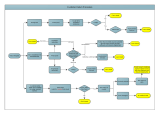
Section, Page No. Changes
Errata to MPC8641D Integrated Host Processor Family Reference Manual, Rev. 1
16 Freescale Semiconductor
PRO=0xFF for a fragment header or a back to back route header
PRO=0xnn for an unrecognized header, where nn is the next protocol field
PRO=<TCP/UDP header>, as defined in the IANA specification, if TCP or UDP
header is found
If IP = 0, PRO is undefined.
13.6.4.3/13-161 In Table 13-143, “Rx Frame Control Block Descriptions,” added the following
text to IP field description.
“If S/W is relying on the RxFCB for the parse results, any RxFCB[IP] bits set with
the corresponding RxFCB[PRO] = 0xFF indicates a fragmented packet (or that
this packet had a back-to-back IPv6 routing extension header. RQFPR[IPF] (see
Section 13.5.3.4.8, “Receive Queue Filer Table Property Register (RQFPR)”)
indicates that the packet was fragmented.”
13.6.4.3/13-161 In Table 13-143, “Rx Frame Control Block Descriptions,” added the following
text to PRO field description:
“Note that the eTSEC parser logic stops further parsing when encountering an IP
datagram that has indicated that it has fragmented the upper layer protocol. This
in general means that there is likely no layer 4 header following the IP header and
extension headers. eTSEC leaves the RxFCB[PRO] and RQFPR[L4P] fields
0xFF in this case, which usually means that there was no IP header seen. In this
case RxFCB[IP] and optionally RxFCB[IP6] will be set. IP header
checksumming will operate and perform as intended. Most of the time, the
eTSEC will update the RxFCB[PRO] field and RQFPR[L4P] fileds with whatever
value was found in the protocol field of the IP header. See Section 13.5.3.3.8,
“Receive Queue Filer Table Property Register (RQFPR),” for a description of
RQFPR.”
13.6.6/13-170 Added Section 13.6.6, “Loss Flow Control,” as follows:
13.6.6 Lossless Flow Control
The eTSEC DMA subsystem is designed to be able to support simultaneous receive and transmit traffic at
gigabit line rates. If the host memory has sufficient bandwidth to support such line rates, then the principle
cause of overflow on receive traffic is due to a lack of Rx BDs. Thus, the long term receive throughput is
determined by the rate at which software can process receive traffic. If a user desires to prevent dropped
packets, they can inform the far-end link to stop transmission while the software processing catches up
with the backlog.
To avoid overflow in the latter case, back pressure must be applied to the far-end transmitter before the Rx
descriptor controller encounters a non-empty BD and halts with a BSY error. As there is lag between
application of back-pressure and response of the far-end, the pause request must be issued while there are
still BDs free in the ring. In the traditional eTSEC descriptor ring programming model, there is no way for
hardware to know how many free BDs are available, so software must initiate any pause requests required
during operation. If software is backlogged, the request may be not be issued in time to prevent BSY errors.




















